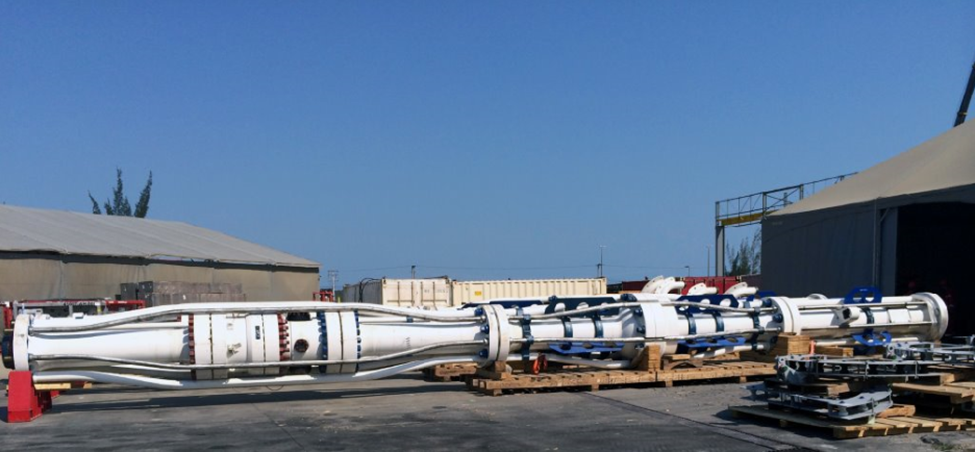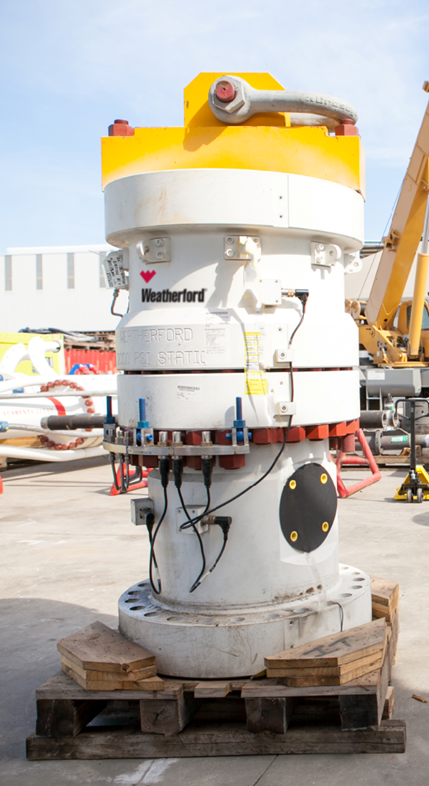The unique drilling challenges of Brazil’s deep and massive presalt formations are pushing the technological envelope far beyond the capabilities of traditional methods. Buried thousands of feet beneath the salt, layered and complex carbonate reservoirs hold a wealth of resources, but conventional drilling methods are no match for them.
Narrow pore pressure windows and frequent kickloss scenarios have propelled managed-pressure drilling (MPD) to the forefront in this high-profi le sector, enabling operators to unlock the potential by reaching target depth (TD) and reducing cost and risk. MPD, which effectively manages annular pressure in the wellbore, is increasingly being adopted in Brazil as a viable method for overcoming the limitations of standard drilling systems. MPD is now required on many rigs drilling exploratory and appraisal wells in the country’s presalt formations to assess the reserve potential because thick salt layers obscure the oil and gas reservoirs below.
The MPD technique was successfully implemented on a deepwater appraisal well in a challenging presalt area, enabling the operator to drill the well to TD and confirm the presence of good-quality oil. In this case, the Weatherford advanced deepwater MPD system was integrated onto a dynamically positioned drillship to automatically adjust the downhole pressure profi le and quickly detect and manage kicks in a closed-loop drilling process that delivers environmental, cost and safety benefits.
Reaction time is a key parameter in assessing the benefits of MPD over conventional drilling, especially in deepwater environments where changes in downhole pressure present the risk of a kick or fl uid loss. Maintaining bottomhole
pressure (BHP) is important for keeping formation fluids at bay and ensuring wellbore stability to prevent collapse.
Conventional open drilling systems manipulate mainly mud weight and fl ow rates to control the amount of pressure being exerted on the well itself. This is done by circulating out old mud and pumping in new mud—a procedure that can take several hours, or days in the case of a deepwater well. Adjusting the drillstring pump rate can compromise hole-cleaning. These measures contribute to nonproductive time and risk.

Closed-loop system
The Weatherford Microfl ux automated deepwater MPD system overcomes these limitations with a closed-loop design that closes the well in so that backpressure can be exerted. In real time, the automated control system detects minute pressure changes and provides the capability to control an infl ux within volumes of 1 bbl to 2 bbl on average.
This immediate and automatic reaction time keeps the size of kicks small and reduces the risk of catastrophic well control events while enhancing drilling effi ciency and reducing costs. The system, which has been deployed successfully for multiple deepwater wells globally, including presalt formations, utilizes a deepwater rotating control device (RCD), an automated MPD choke manifold, an annular isolation device, an MPD fl ow spool and other equipment to precisely manage the pressure profi le while drilling and to maintain constant BHP.
The deepwater MPD system was deployed to drill a vertical appraisal well in approximately 1,982 m (6,500 ft) of water. The impetus for using MPD for this operation was the drilling of two offset wells that both encountered kick-loss scenarios.
The first well experienced losses up to 200 bbl/hr with no improvement even after the crew spent 15 days attempting to reverse the loss rate. The second well experienced losses of more than 50 bbl/hr with a kick-loss event occurring after the mud weight was reduced. That second well was plugged and abandoned, and a reentry operation using MPD was planned.
The subsequent appraisal well was drilled using MPD to reach and assess a volcanic formation below the carbonate reservoir where kicks and losses were anticipated. Because formation pressures in deepwater wells are diffi cult to predict, the operator initially conducted a dynamic pore pressure test to lower the pressure of the well to gauge the kick potential. Those results, along with a dynamic formation integrity test, established the drilling window.
Well sealing
An essential element of the automated MPD control system is the deepwater below-tension-ring (BTR) RCD, which was integrated into the rig’s standard open fluid return system to close in the well. This enabled rotation while drilling to accommodate varying pressures.
A bearing assembly installed into the RCD transformed the open fl uid-return system on the rig to a closed-loop circulating system, creating a pressure-tight barrier in the wellbore annulus to immediately contain and divert return fluids to prevent the infl ux of gas or kicks. This capability is not feasible with conventional diverter systems.
Interfacing seamlessly with the BOP system already in place, the RCD provides a safe and cost-effective means of creating a closed and pressurized system that augments well control. This feature is signifi cant because BOPs are designed for well control emergencies and are not rated to facilitate rotation and drilling while in the closed position.
The drilling operation for the presalt well used a statically underbalanced mud weight. The automated MPD control system, including the real-time monitoring equipment and well model calculations, maintained stable BHP by applying surface backpressure. The BTR RCD, specifi cally designed for fl oating rigs with subsea BOPs, optimized kick detection and also allowed the dynamically positioned rig to rotate and maintain its position above the well.
The RCD routed return flow from the well through the automated MPD choke manifold to a Coriolis mass flowmeter, which captured critical data in real time, including mass and volume flow, mud weight, and temperature. The data are essential for facilitating a quick reaction to well control events.
By precisely managing the well pressure profi le to maintain BHP, the automated deepwater MPD system offered additional downhole visibility to allow more informed drilling decisions and enable the drilling operation to continue to TD more safely. Drilling and logging operations confi rmed an expressive oil column with the carbonate formation containing good-quality oil.
Deployment of the automatic deepwater MPD system enabled the operator to assess the reservoir’s production potential and economic benefi ts, an objective that would not have been possible using conventional drilling methods.

Recommended Reading
Phillips 66’s NGL Focus, Midstream Acquisitions Pay Off in 2024
2025-02-04 - Phillips 66 reported record volumes for 2024 as it advances a wellhead-to-market strategy within its midstream business.
Argent LNG, Baker Hughes Sign Agreement for Louisiana Project
2025-02-03 - Baker Hughes will provide infrastructure for Argent LNG’s 24 mtpa Louisiana project, which is slated to start construction in 2026.
CPP Wants to Invest Another $12.5B into Oil, Gas
2025-03-26 - The Canada Pension Plan’s CPP Investments is looking for more oil and gas stories—in addition to renewable and other energies.
Italy's Intesa Sanpaolo Adds to List of Banks Shunning Papua LNG Project
2025-02-13 - Italy's largest banking group, Intesa Sanpaolo, is the latest in a list of banks unwilling to finance a $10 billion LNG project in Papua New Guinea being developed by France's TotalEnergies, Australia's Santos and the U.S.' Exxon Mobil.
BKV Appoints Dilanka Seimon to New Chief Commercial Officer Position
2025-04-03 - BKV Corp. has created a new chief commercial officer position and placed industry veteran Dilanka Seimon in the role.
Comments
Add new comment
This conversation is moderated according to Hart Energy community rules. Please read the rules before joining the discussion. If you’re experiencing any technical problems, please contact our customer care team.




